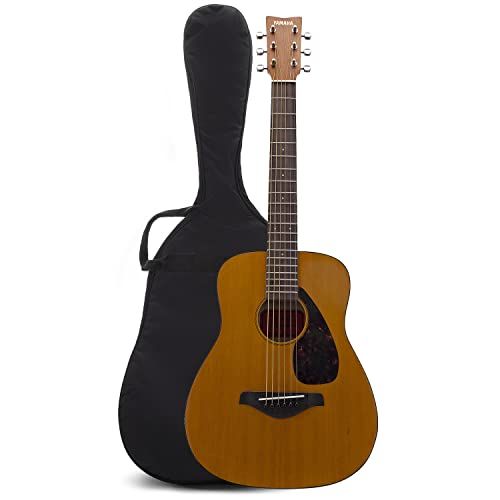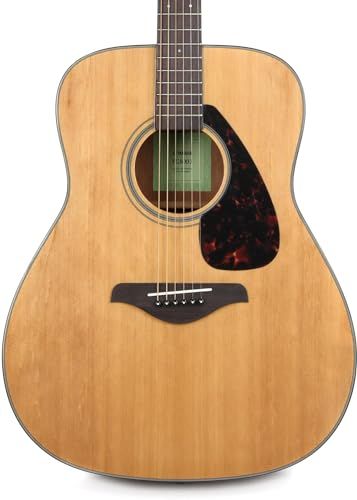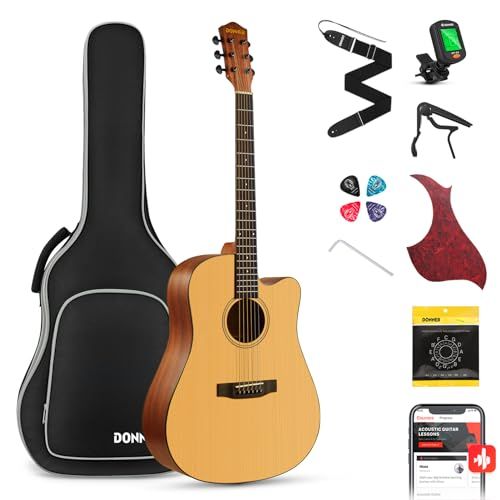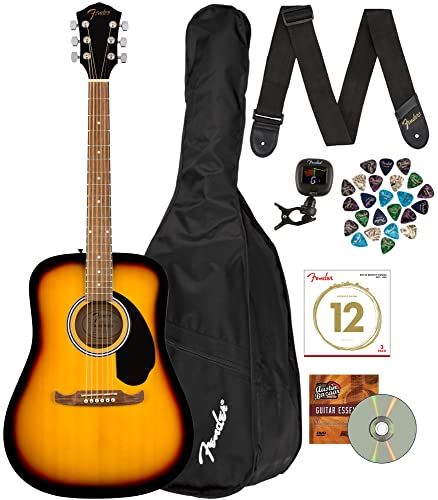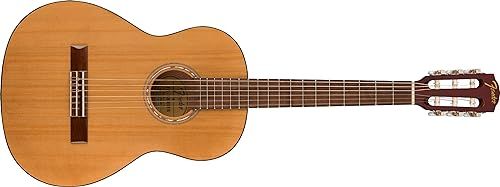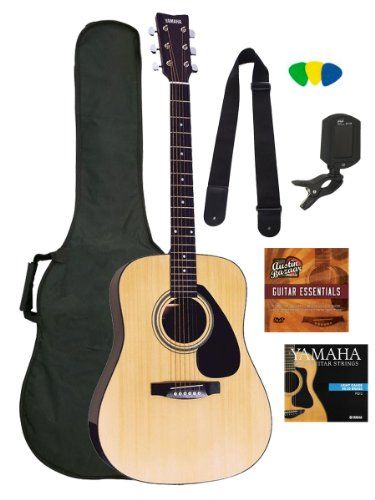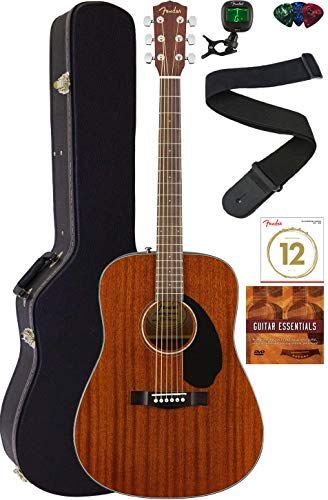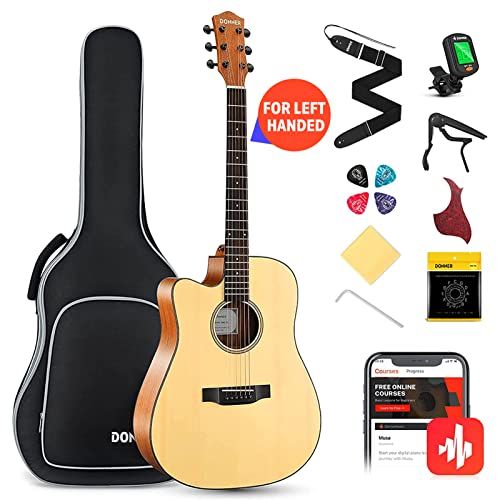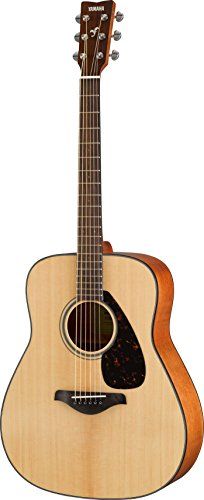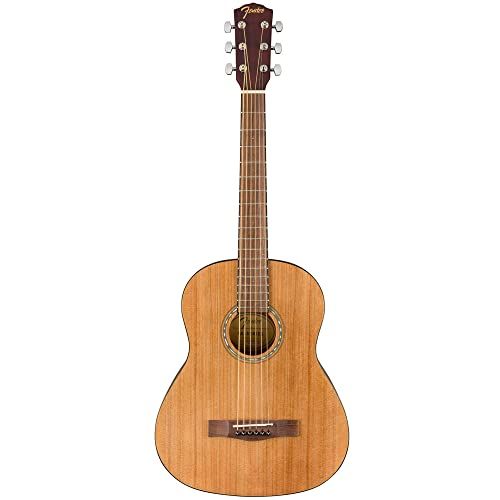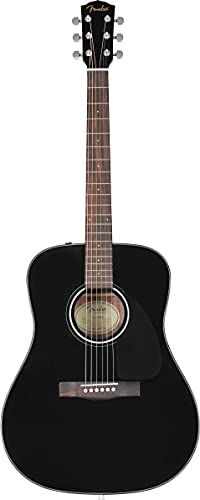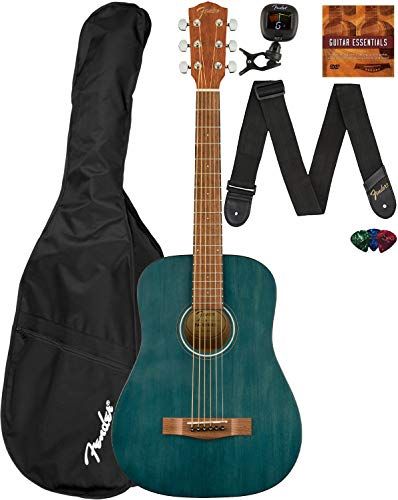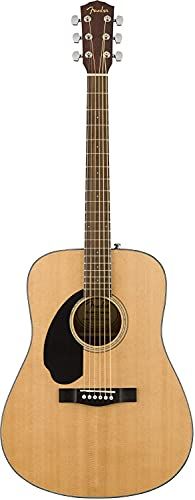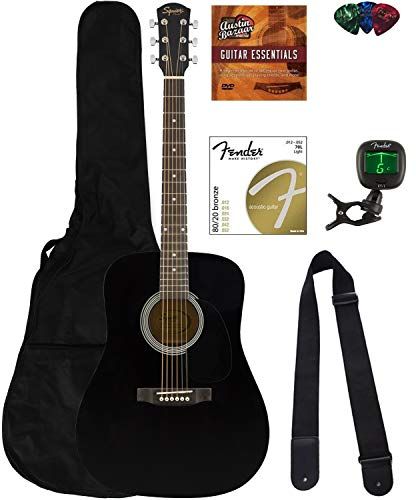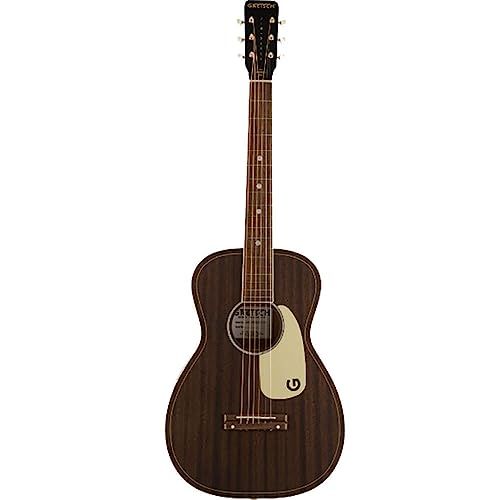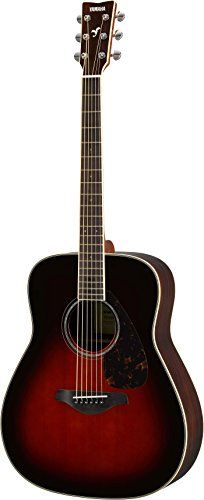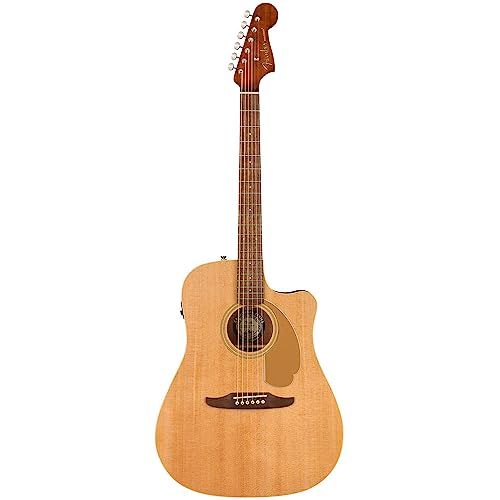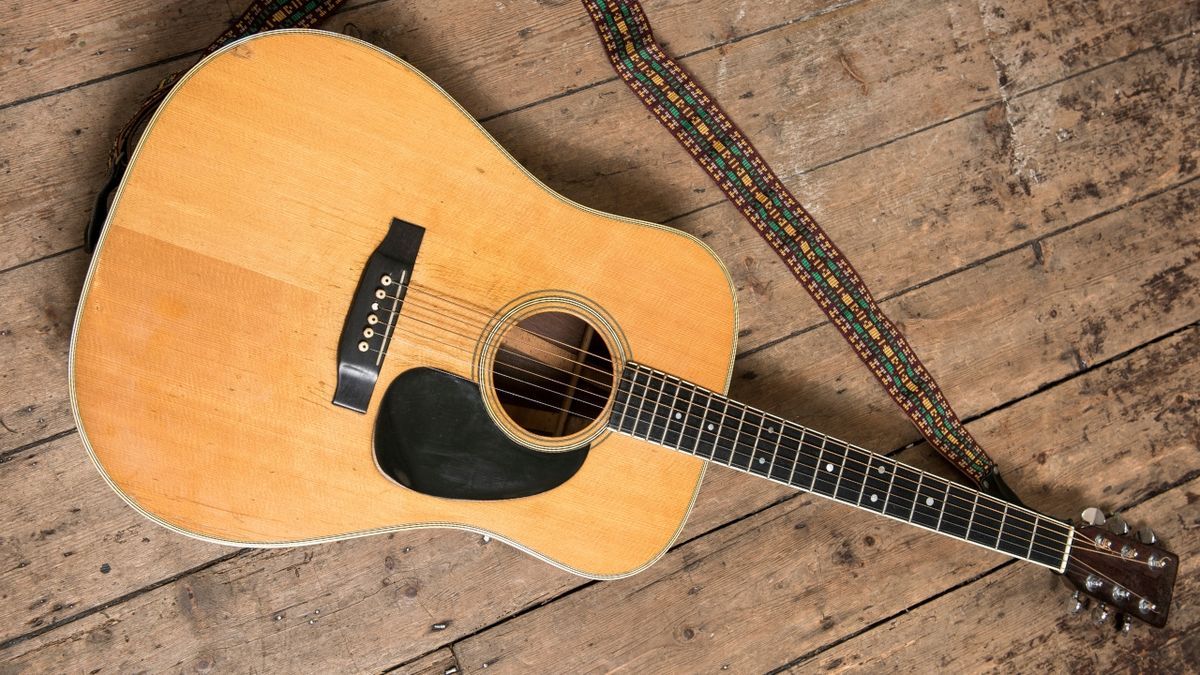
The acoustic guitar has a long and storied history. Its origins can be traced back over 4,000 years to ancient instruments like the lute and oud. Acoustic guitars as we know them today emerged in the late 1800s as the modern successor to historical instruments.
There are two main types of acoustic guitars - steel-string and nylon/classical. Steel-string acoustics emerged in the early 20th century and are known for their bright, punchy sound with a metallic timbre from the steel strings. Nylon/classical guitars have a mellower, warmer sound and softer nylon strings. They are based on historical classical instruments.
Acoustic guitars create sound through the vibration of their strings transmitted through the bridge and amplified naturally by the body of the guitar. This gives them a rich, resonant sound unmatched by electric guitars which rely on electronic amplification and speakers.
Some key advantages of acoustic guitars include:
Natural acoustic resonance and sustain
No need for amps or pickups
Wider range of tones from playing style
Increased portability
Traditional look and feel
Electric guitars do have some advantages such as:
Increased volume and ability to use effects
Easier playability due to lighter gauge strings
Consistent sound not affected by environment
Durability with solid bodies
However, nothing compares to the iconic sound of a well-played acoustic guitar. The acoustic guitar's all-natural voice has made it a staple across diverse musical genres for over a century.
Anatomy of an Acoustic Guitar
The anatomy of an acoustic guitar consists of several key components that work together to produce its unique sound.
Body Shape and Size
The body shape and size of an acoustic guitar affects its tone and volume. Common body types include:
Dreadnought
- Large and deep body produces loud, booming sound. Most common acoustic shape.
Orchestra
- Rounded shoulders and waist produces balanced tone.
Grand Auditorium
- Tweener shape between dreadnought and orchestra. Balanced tone.
Jumbo
- Deeper than a dreadnought with very loud projection.
Small Body
- Bright, focused tone good for fingerpicking.
Larger bodies produce louder, deeper tones while small bodies are brighter and more focused.
Neck
The neck of an acoustic guitar must support the string tension while allowing playability. Neck construction includes:
Wood
- Mahogany or maple are most common. Affects tone and feel.
Shape
- C, U, V and exotic shapes. Impacts playability.
Scale length
- Distance between nut and saddle. Longer scales sound brighter.
Bridge
The bridge transfers string vibrations to the guitar top to produce sound. Materials like bone, plastic or ebony affect tone and volume. Positioned properly for optimal intonation.
Strings
Steel and nylon are two main acoustic string types. Steel offers brightness and defined bass while nylon has a warm, rounded sound. String gauge affects playability and tone.
Pickups
Pickups amplify and capture the guitar's sound. Common types:
Piezo Pickup
- Senses bridge vibration. Natural acoustic sound.
Soundhole Pickup
- Microphone senses vibrations through soundhole. Warm, rounded tone.
Pickups allow acoustic guitars to be amplified and modified.
Acoustic Guitar Woods
The wood used to make an acoustic guitar, known as tonewood, has a huge impact on the sound and playability of the instrument. Guitar makers carefully select certain woods for the top (soundboard), back, sides, neck and fretboard based on their tonal characteristics and physical properties.
The most common material for the top is spruce, prized for its strength, light weight and ability to produce a bright, loud sound. Spruce is light and responsive, allowing the top to vibrate freely and project the strings' energy into the air. Mahogany is another popular top wood, producing a warmer, more mellow tone.
The back and sides provide some tonal coloring, but their main function is structural support. Most backs and sides are made of rosewood, known for its rich bass and excellent projection. Mahogany is also used - it has a more balanced tone but reduced bass response compared to rosewood. Maple produces great volume and an overall bright sound.
The neck is commonly made of mahogany or maple. Mahogany offers warmth and stability, while maple provides brightness and definition. The fretboard directly influences playability, so woods like rosewood and ebony are used for their hardness, durability and smooth feel.
The ultimate sound of an acoustic guitar depends on how all these tonewoods complement each other. Careful wood selection allows luthiers to create instruments with diverse tones - from the balanced timbre of mahogany to the pristine clarity of spruce. When buying an acoustic guitar, it's worth considering the woods used to achieve your desired sound.
Acoustic Guitar Construction
The construction of an acoustic guitar is an intricate process that has a major impact on the instrument's tone and playability. There are several key elements that factor into how an acoustic guitar is built.
Solid vs Laminate Tops
The guitar's top, also known as the soundboard, has a huge effect on the volume and tone an acoustic guitar produces. Most high-end steel-string acoustics have solid wood tops, typically made from spruce or cedar. Solid wood freely resonates and vibrates, allowing the guitar to project at high volumes with bright, complex overtones.
Laminate tops are made by gluing thin layers of wood together. While more affordable, laminate doesn't vibrate as freely as solid wood, resulting in a quieter guitar with a more muted tone. A guitar's back and sides do not affect sound as much as the top, so they can often be laminated without greatly diminishing the instrument's acoustic properties.
Bracing Patterns and Techniques
The bracing underneath the guitar top reinforces the wood and enables it to withstand the tension of the strings without caving in. How the braces are crafted and arranged has a significant influence on the guitar's resonant properties.
Bracing techniques like scalloped bracing carve away wood from the braces to make them lighter and more flexible. Other patterns like X-bracing, A-bracing, ladder bracing, and fan bracing each alter the guitar's tonal qualities in subtle ways. The thickness, height, angles, and placement of the braces all factor into how the top vibrates and, in turn, the unique voice of that particular guitar. Master luthiers carefully design the bracing to shape the instrument's sustain, volume, and tonal balance.
Steel vs Nylon Strings
One of the main decisions when purchasing an acoustic guitar is whether to get one with steel or nylon strings. Each material produces a very different tone and feel.
Tone and Volume
Steel strings have a bright, metallic sound that projects well. This makes them great for live performances or busking. The tension produced by steel strings gives volume and sustain.
Nylon strings have a softer, warmer, mellower tone. Their quieter volume means they are best suited to more intimate playing rather than large concerts. The sound is seen as more "classical" than steel-string acoustics.
Playability and Fingerpicking
Steel strings have higher tension and a thinner neck profile. This can make complicated fingerstyle techniques like picking and bending easier, at the cost of being harder on your fingertips until calluses build up.
The lower tension of nylon strings is gentler on the fingers, allowing for intricate right hand techniques. The wider neck and string spacing also facilitate fingerstyle playing. However, the strings' looser feel and spongier response mean fast runs and string bending are trickier.
Changing and Tuning Strings
Steel strings hold their tune well but tend to degrade over time, requiring more frequent changing to keep in tune. Individual strings can be replaced as needed.
Nylon strings lose their tune more easily but have much longer lifespans. Entire sets generally need replacement only every few months. Most nylon string players use a tuner due to their tuning instability.
Body Shapes and Sizes
Acoustic guitars come in a variety of shapes and sizes, each with their own sound, feel, and use cases. Some of the most common body shapes are:
Dreadnought
The most popular and widely used acoustic guitar shape.
Features a wide body and deep curve at the waist.
Produces a loud, booming, and bassy tone thanks to its large body size.
Commonly used for strumming and flatpicking styles.
Examples include the Martin D-28 and Gibson Hummingbird.
Parlor
Smaller bodied guitar, with a narrow waist.
Balanced and articulate sound.
Well suited for fingerpicking styles.
Travel friendly size.
Vintage examples include Martin 0-18 and Gibson L-00 models.
Jumbo
Very large bodied guitar with deep round shape.
Produces extremely loud, punchy, and deep bass tones.
Popular for aggressive strumming styles.
Examples include Gibson J-200 and Martin D-45.
The right body shape for you depends on your playing style, needs, and tonal preferences. Smaller bodied guitars like parlor models offer portability and balanced tone while larger shapes like jumbos provide volume and bass response. The most versatile and popular shape remains the dreadnought.
Acoustic Guitar Necks
The neck of an acoustic guitar has a big impact on playability and feel. Important factors to consider when looking at acoustic guitar necks include:
Neck Width and Thickness
Neck width is measured at the nut and refers to how wide the neck feels in your hand. Wider necks can be more comfortable for fingerstyle playing, while narrower necks allow for easier fretting and are common on steel-string models.
Neck thickness or profile refers to how deep or thin the neck is from the fingertip side to the back. Thicker necks provide more rigidity while thinner necks are more flexible and easier for smaller hands to grip.
Number of Frets
Most acoustic guitars have 19 or 20 frets, extending to around the 15th fret on the body. More frets allow you to play higher notes on the neck.
12-fret guitars join the neck at the 12th fret, resulting in a longer, warmer tone but less upper fret access.
Neck Joint Types
Set neck: The neck is glued into the body for maximum stability and sustain. More common on electric guitars.
Bolt-on neck: The neck is bolted onto the guitar body, allowing easier replacement or adjustment.
Dovetail joint: A dovetail interlocking joint where the neck is precisely fitted into the body. Found on many fine acoustic guitars.
Neck-through: The neck runs through the entire guitar body for maximum resonance. Rare on acoustics.
Considering neck feel and specifications like these will help find your ideal acoustic guitar neck for comfortable playability.
Acoustic Guitar Pickups
Pickups allow acoustic guitars to be amplified and played through speakers or mixing boards. There are two main types of acoustic guitar pickups:
Soundhole vs Undersaddle Pickups
Soundhole pickups: These are mounted inside the soundhole of the guitar and use a transducer to detect the vibrations coming from the guitar's top. They are easy to install and generally less expensive. However, they tend to pick up more ambient noise.
Undersaddle pickups: These are mounted under the saddle of the guitar. They detect the vibrations directly from the strings for a more dynamic and focused amplified tone. However, they require professional installation.
Active vs Passive Pickups
Passive pickups simply detect and transmit the guitar's signal without any powered electronic components. The signal requires external amplification and EQ.
Active pickups have a preamp built-in to boost and shape the tone. This allows for easier amplification and mixing, but requires a battery or external power source.
Why and When to Amplify
There are a few reasons to amplify an acoustic guitar:
To increase volume for live performances or band settings
To shape tone with EQ and effects during live shows or recordings
To isolate the guitar signal for clarity in the mix
To enhance acoustic resonance through venue speakers or PA systems
In general, amplification is only needed if volume, tone, or isolation is required. Otherwise an acoustic guitar's natural unamplified sound is preferred for most playing styles and settings.
Acoustic Guitar Accessories
Though an acoustic guitar can certainly be played on its own, there are a variety of accessories that can enhance your playing experience. Here are some of the most common acoustic guitar accessories to consider:
Capos
A capo is a clamp that attaches to the guitar neck to shorten the playable length of the strings. This allows guitarists to play in different keys using the same chord shapes. Capos are inexpensive and easy to use, making them a very popular accessory for acoustic guitarists who want flexibility in changing keys.
Straps
A strap allows you to stand and play your acoustic guitar, providing more freedom of movement. Guitar straps come in a variety of styles, colors, and materials, but good quality leather or nylon straps with comfortable padding are recommended to support the weight of the guitar.
Cases
An acoustic guitar case is a must-have for protecting your instrument from damage. Hard-shell cases offer the most protection, but soft gig bags are more affordable and easier to transport. The right case keeps your guitar safe from bumps, dings, weather, and more.
Strings
Replacing old strings with fresh ones will keep your acoustic guitar sounding its best. Coated strings last longer than non-coated, but all strings eventually corrode and lose their bright tone. Stock up on extra sets for quick string changes.
Tuners
A tuner or pitch pipe allows you to properly tune your acoustic guitar before playing. This ensures your chords ring out accurately. Clip-on tuners attach to the headstock for easy tuning on the go. There are also tuner apps, but dedicated tuners don't require batteries or internet.
Picks
Picks produce a brighter tone than playing with fingers alone. Picks come in different shapes, sizes, materials, and thicknesses. Testing a variety will help determine the right pick for your playing style. They are optional, but inexpensive and easy to stash in a guitar case.
The accessories above represent the basics for most acoustic guitarists. Capos, straps, cases, and strings are essential for protecting your instrument and keeping it playing its best. Picks and tuners enhance your musicality and take your acoustic guitar skills to the next level. With the right extras, your acoustic guitar can continue providing years of enjoyment.
Buying an Acoustic Guitar
When looking to purchase an acoustic guitar, there are a few key factors to consider:
Budget and Quality
Acoustic guitars can range greatly in price from under $100 to over $10,000. In general, spending more will get you a better quality instrument that will be easier to play, hold tuning better, and sound better. However, there are still quality acoustic guitars available even on a tight budget.
For under $200, you can find beginner level acoustics from major brands like Fender, Yamaha, Epiphone, and others. $200-$500 will get you a decent mid-level acoustic. Over $500, you're looking at professional grade instruments.
It's best to get the highest quality instrument you can afford when starting out to make learning easier and more enjoyable. Consider buying used initially.
New vs Used
Buying used can save you a lot of money, especially on higher end models. Used acoustics can perform just as well as new ones if they were properly maintained.
Check used guitars thoroughly for any cracks, warping, or other damage before purchasing. Make sure the neck is straight and frets level. Acoustics tend to mellow and open up in sound as they age, so an older used acoustic may sound even better.
If buying new, consider letting a new acoustic 'break in' for a few weeks before judging its tone as the wood can continue to settle and open up.
Brands & Models
Popular acoustic guitar brands include Martin, Taylor, Gibson, Fender, Epiphone, Yamaha, Seagull, Takamines, etc. Individual models will vary in wood quality, construction, electronics, and sound.
For beginners, good starter models include the YAMAHA FG800, Fender FA-100, Epiphone DR-100, and the Seagull S6 Original. The Martin LXK2 is a great mid-range option. For premium acoustics, the Taylor 214ce and Martin D-28 are top choices.
Try out different acoustic models in person if possible and choose the one that sounds and feels best for your playing style and budget. Consult sales associates on great acoustic options for your needs.
Acoustic Guitars comparison
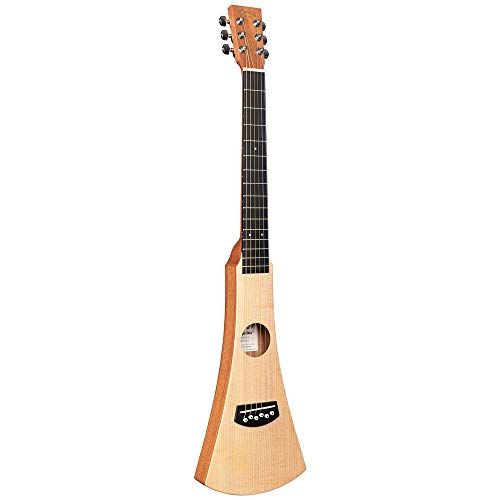 | 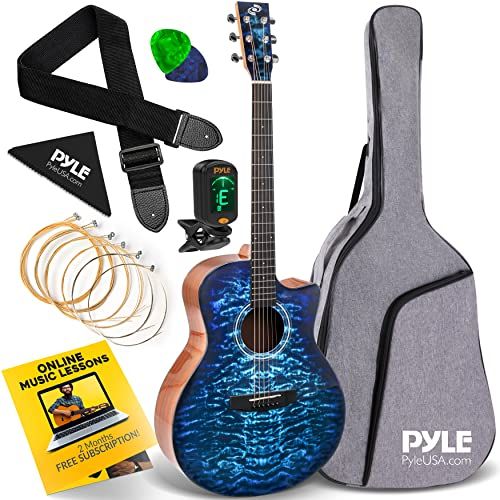 | 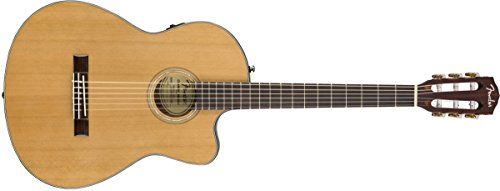 | 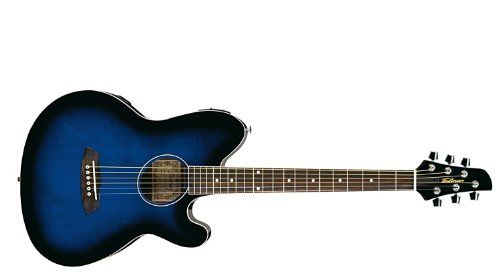 |  | |
|---|---|---|---|---|---|
| Model | Martin 11GBPCL | Pyle PSTGT71BL | Fender CN-140SCE 0970264321 | Ibanez TCY10ETBS | Martin LX1 |
| Body Material | spruce;Mahogany | Wood | Ovangkol | Spruce | HPL (High-Pressure Laminate) |
| Color Name | Natural | Blue,Grey | Natural | Transparent Blue Sunburst | Natural |
| Fretboard Material | Richlite | Quality HPL Material | Walnut Wood | Purpleheart | Mahogany Wood |
| Guitar Pickup Configuration | - | H | Piezo | piezoelectric | - |
| Item Model Number | 11GBPCL | PSTGT71BL | 0970264321 | TCY10ETBS | LX-1 |
| Item Weight | 4.95 pounds | 8.43 pounds | 12.1 pounds | 4.3 pounds | 8.3 pounds |
| Material Type | - | - | - | Spruce Wood, Mahogany Wood, Rose Wood | - |
| Neck Material Type | Mahogany | Okoume Wood | Cedar | Nato | Mahogany |
| Number of Strings | 6 | - | - | - | 6 |
| String Gauge | - | 0.33 /0.41/ 0.61 /0.81 /1.07 /1.35 | - | - | - |
| String Material | Alloy Steel | Alloy Steel | Nylon | Bronze | - |
| Top Material | Spruce | Spruce Wood | Cedar Wood | Spruce | Mahogany Wood, Spruce Wood |
| Voltage | - | - | - | - | 240 Volts |
| Back Material Type | Mahogany | Natural Sapele Wood | Walnut Wood | Sapele | Mahogany Wood |
| Brand | MARTIN | Pyle | Fender | Ibanez | MARTIN |
| Color | Natural | Blue,Grey | Natural | Transparent Blue Sunburst | Natural |
| Fretboard Material Type | Richlite | Quality HPL Material | Walnut Wood | Purpleheart | Mahogany Wood |
| Hand Orientation | Left | Right | Right | Right | Right |
| Scale Length | - | - | - | - | 23 Inches |
| String Material Type | Alloy Steel | Alloy Steel | Nylon | Bronze | - |
| Top Material Type | Spruce | Spruce Wood | Cedar Wood | Spruce | Mahogany Wood, Spruce Wood |
| Price | $299 | $143.99 | $429.99 | $229.99 | $449 |
FAQ
What is an acoustic guitar?
An acoustic guitar is a wooden instrument with steel strings that produces sound naturally through the vibration of its strings and body.
What are the different types of acoustic guitars?
The main types of acoustic guitars are: steel-string acoustic guitars, nylon-string acoustic guitars or classical guitars, 12-string acoustic guitars, and resonator acoustic guitars.
What are acoustic guitars made of?
Acoustic guitars are typically made of tonewoods like spruce, cedar, mahogany, rosewood, maple, etc. The top, back and sides of the guitar are made of different tonewoods that provide warmth, brightness or balance to the sound.
How do I choose an acoustic guitar?
Some things to consider when choosing an acoustic guitar are: body style (dreadnought, jumbo, parlor, etc.), tonewoods, neck size, acoustic or acoustic-electric, price range, and brand. The right guitar for you depends on your needs, budget, and playing style.
How much do acoustic guitars cost?
You can find acoustic guitars ranging from under $100 to $10,000 or more. In general:
$100-$500: Great for beginners. Made of basic tonewoods.
$500-$1,500: Mid-range guitars with solid tops and good playability.
$1,500-$3,000: Higher-end guitars with solid tops, quality hardware and electronics.
$3,000-$10,000: Premium, handcrafted guitars made of exotic tonewoods.
How do I tune an acoustic guitar?
You can tune an acoustic guitar using an electronic guitar tuner or by ear using online audio samples. The standard tuning for acoustic guitars from the lowest pitch string to the highest is: E A D G B E.
How do I string an acoustic guitar?
To string an acoustic guitar:
1. Purchase a pack of acoustic guitar strings in the gauge and material you want.
2. Loosen the old strings using a guitar tuner or tuning key.
3. Remove the bridge pins or string guides to remove the old strings.
4. Thread the new strings through the bridge and tuning posts.
5. Wind the tuning posts to bring the new strings up to pitch.
How do I maintain an acoustic guitar?
To properly maintain your acoustic guitar:
Wipe down the guitar after playing to remove dirt and oils.
Clean the fretboard and frets.
Use a guitar humidifier to keep the wood from drying out.
Have the guitar set up by a luthier once a year or so.
Store the guitar in a hard case in a cool area away from direct heat or sunlight.
Can I play an acoustic guitar through an amp?
Yes, you can play an acoustic guitar through an amplifier. There are a few options:
Use an acoustic guitar pickup that mounts to the guitar.
Use an acoustic preamp or DI box to connect the guitar to an amp.
Choose an acoustic-electric guitar that has electronics built-in.
What accessories do I need for an acoustic guitar?
Useful accessories for an acoustic guitar include: extra strings, guitar strap, guitar stand, guitar case, guitar picks, guitar capo, guitar tuner, guitar humidifier, and guitar polish/cleaner.
